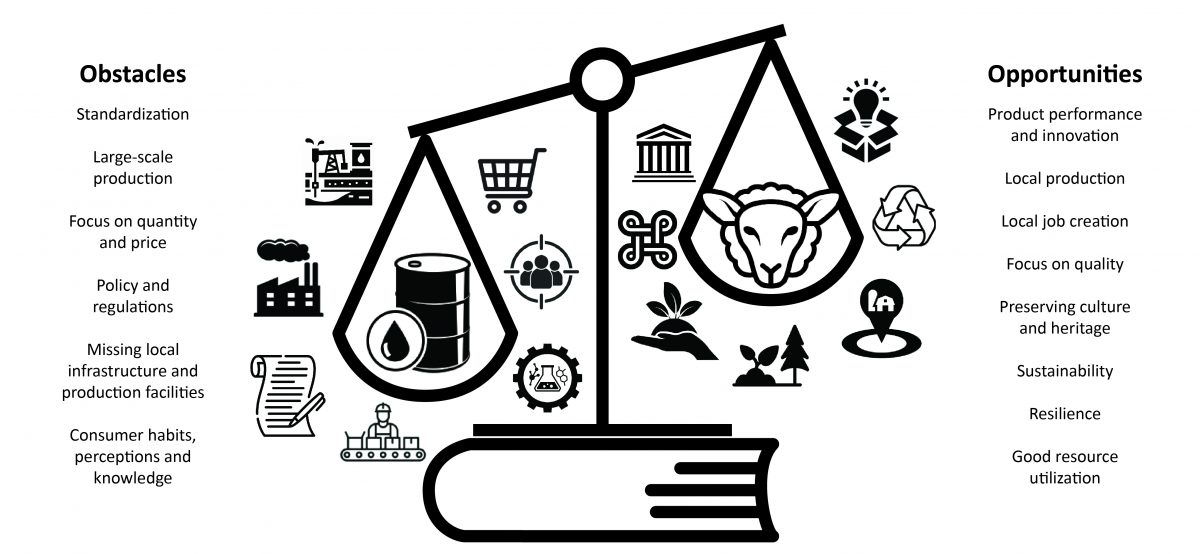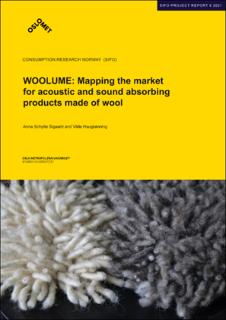Reducing Plastic in Consumer Goods: Opportunities for Coarser Wool
Lisbeth Løvbak Berg, Ingun Grimstad Klepp, Anna Schytte Sigaard, Jan Broda, Monika Rom and Katarzyna Kobiela-Mendrek.
Abstract
Production and use of plastic products have drastically increased during the past decades and their environmental impacts are increasingly spotlighted. At the same time, coarse wool, a by-product of meat and dairy production, goes largely unexploited in the EU. This paper asks why more coarse wool is not used in consumer goods, such as acoustic and sound-absorbing products, garden products, and sanitary products. This is answered through a SWOT analysis of results from a desktop study and interviews with producers of these products made from wool, as well as policy documents relating to wool, waste, textiles, and plastic. Findings show that on a product level, the many inherent properties of wool create opportunities for product development and sustainability improvements and that using the coarser wool represents an opportunity for replacing plastics in many applications as well as for innovation. This is, however, dependent on local infrastructure and small-scale enterprises, but as such, it creates opportunities for local value chains, value creation, and safeguarding of local heritage. The shift to small-scale and local resource utilization requires systemic change on several levels: Here the findings show that policy can incentivize material usage transitions, but that these tools are little employed currently.

